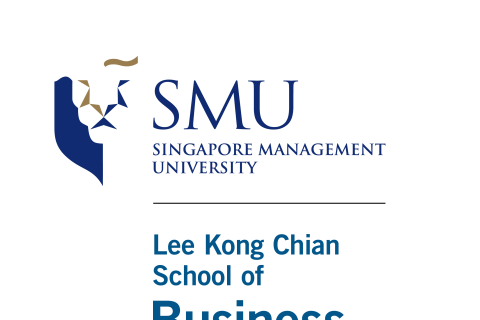
By Alvin Lee
SMU Office of Research and Tech Transfer – When Singapore announced plans in 2012 to build a mega port in the western part of the island, industry observers were hardly surprised. Shanghai had just surpassed the island state as the world’s busiest container port while Port Klang in neighbouring Malaysia was eyeing its status as the world’s largest transshipment hub. A closer Malaysian port at Tanjung Pelapas, located just across the Straits of Johor from the proposed Tuas mega port, recorded a seven percent jump in container traffic in 2018.
The race to build mega ports is a direct result of catering to ever bigger container ships, with the biggest being the Ultra Large Container Vessels or ULCVs which have capacities exceeding 20,000 twenty-foot equivalent units (TEUs), the standard measurement of a shipping container. While economies of scale – and consequently, bigger profits – is the ostensible benefit, shipping companies have other considerations when choosing which ports to call at.
“There are things such as how efficient the port is and the turnaround time,” pointed out Joyce Low, Assistant Professor of Operations Management at the Lee Kong Chian School of Business (LKCSB). “[There is also] the cost of cargo handling, parking charges, and of course the departure windows and the arrival windows that the port can actually offer.”
A common (platform) problem
While water depth is a prerequisite for ports vying for hub status, a port’s efficiency in co-ordinating a huge feeder network of smaller ships to load and unload 20,000 containers affects shipping companies’ decision on which port to call at. If ports and shipping companies readily share data on a common platform, Prof Low believes, ships could spend less time waiting around for loading and unloading, and get on with the job of moving goods.
It is, however, easier said than done.
“To get the data from them is really very, very difficult,” lamented Prof Low, highlighting the ever narrowing margins that give pause to shipping executives contemplating sharing information. “If you know a ship is going to unload less cargo compared to another ship, perhaps you could let the smaller ship berth first so that they can smoothen out the operations.
“But most shipping companies think, ‘I won't let you know [my load] because if you [have a smaller load and] berth first, and then get delayed for one reason or another, it will cause unnecessary delay on my side and I may miss the time window at my next port. So everybody is trying to locally optimise rather than globally optimise.” She added:
“People out there are actually pushing for improvements. Shippers are pushing for operation visibility. They want to know, ‘If I choose this liner shipping company, when can I expect to get my cargo since most of the time shipping lines are hardly punctual?’ Shipping liners are forming alliances among themselves, and it's certainly to their advantage if members share information freely so that they can actually better coordinate the transshipments.
“Unfortunately, we don't see that happening too much.”
Similarly, port operators are leery of providing information about their operations. Prof Low highlighted attempts by researchers to utilise public data to manually work out how long certain ports take to turn specific kinds of vessels around. These researchers look at when a vessel anchors at and leaves a port to derive a definite duration but Prof Low warned that the figure “could be quite misleading, because it depends on how much cargo they are unloading over there”.
“And then,” she further elaborated, “the ships may do refuelling, they may do maintenance. As a result, it's very hard to [compare port performance]. It's basically very simple data: how long a port takes to process a certain type of ship. But yet we couldn't get it.”
At the core of this reluctance to share information are the razor-thin margins of the shipping industry. The first quarter of 2018 serves as an example: only three container lines worldwide made a profit, led by Hapag-Lloyd which came out tops with an operating profit of US$66 million on revenues of US$3.22 billion – a 2.1 percent margin. To cut down on costs, shipowners (supply) and charterers (demand) have toyed with the idea of a common platform where shipowners can offer their ships in a tender process to cut out the middleman, the shipbrokers.
“If you cut off the middleman, it means… cost savings,” Prof Low articulated. “While it presents a financial incentive for the shipowners to put the ships on a common platform, thereby eliminating the need for the brokers, somehow the industry is still quite resistant to change.
“The shipowners dare not do it. They do not want to antagonise the shipbrokers because they provide some kind of value-add. Shipbrokers know the market well, and they may be able to match the demand and supply. From the shipowners’ perspective, they are not too certain if they can actually do a better job and thereby end up losing more than they gain.”
Building a career in the maritime industry
For Prof Low, who became a full-time faculty member in July after years as a Senior Lecturer of Operations Management in SMU, and whose research cover logistics and supply chain management as well as transportation planning, these are issues that students of the shipping industry need to be aware of.
“Water transportation is characterised by port rotations, where first you visit Port A, followed by Port B, Port C, Port D, and then it comes back in a round,” she explained to the Office of Research & Tech Transfer. “So when the service network is different, obviously the business strategies and the operating strategies are going to be different. You will need to consider the sequence of port calling and where you will refuel.”
Pointing to the Maritime Business Operation Track (MBOT) that LKCSB began offering to undergraduates in January 2019, she said students will be brought up to speed with these issues because “the maritime industry is a business sector, and to do it well you must understand how the industry actually operates and its dynamics”.
“We actually have drawn out a solid curriculum,” she explained, referring to theory-based learning as well as industry study missions and internships. “We are very proud that this track has a very structured and integrated exchange program [with] Copenhagen Business School. The courses that students take in the two universities are very much coordinated, so we complement one another's strengths in the course delivery.
“And apart from that, we also have a range of non-credit courses that will last for just a couple of days. These courses are conducted by industrial practitioners so they would be able to tell our students what is happening in the industry. And apart from learning the practical aspects, it also allows our students to be in the radar of the employers.”
Back to Research@SMU Aug 2019 Issue
See More News
Want to see more of SMU Research?
Sign up for Research@SMU e-newslettter to know more about our research and research-related events!
If you would like to remove yourself from all our mailing list, please visit https://eservices.smu.edu.sg/internet/DNC/Default.aspx

